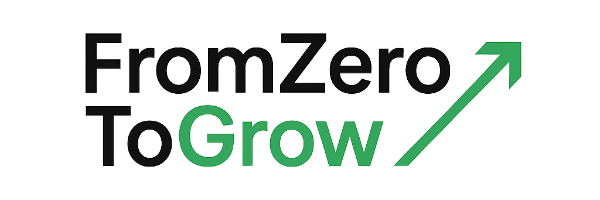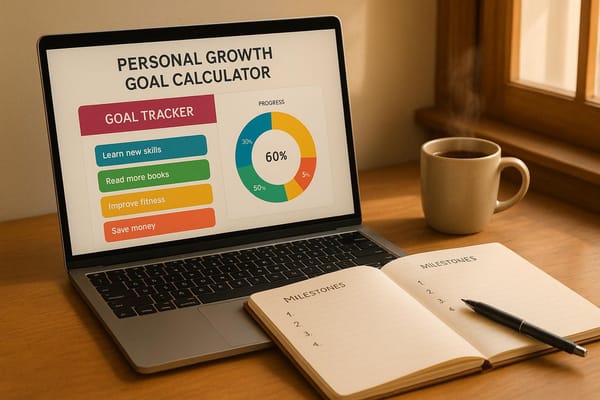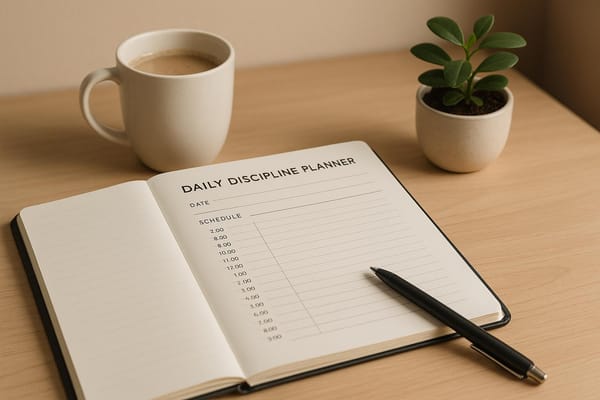How to Identify Transferable Skills for a Career Shift
Learn how to identify and leverage transferable skills for a successful career shift, enhancing your employability in new roles.

Switching careers can feel intimidating, but your existing skills can help you make the leap. Transferable skills are abilities that apply across different jobs and industries, like communication, problem-solving, and teamwork. Employers value these skills because they show you can succeed in new roles, even without direct experience.
Here’s how to identify and leverage them:
- Understand transferable skills: These include technical abilities (e.g., data analysis) and interpersonal strengths (e.g., leadership).
- Review your experiences: Look at work, school, volunteering, and hobbies to find skills you’ve developed.
- Match skills to target jobs: Analyze job postings to see which skills are in demand and where you might need to improve.
- Present skills effectively: Tailor your resume, cover letter, and interview responses to show how your skills align with the job.
How to identify a list of transferable skills in a career change | 4 easy steps
What Are Transferable Skills?
Transferable skills are the abilities you carry with you from one job to another, no matter the industry. Think of them as your career essentials - the skills that remain valuable whether you're switching roles or diving into a completely new field. Unlike technical skills that are tied to specific tasks or industries, these skills have a broader application and are highly sought after in virtually every workplace.
They can include technical abilities like data analysis, using project management tools, or financial modeling, as well as interpersonal strengths like communication, leadership, and problem-solving.
Employers love transferable skills because they show you're adaptable and ready to contribute right away. When hiring managers spot these skills on your resume, they see someone who can quickly adjust to new challenges and bring value to their team. This is especially important in today’s fast-changing job market, where businesses need employees who can juggle multiple responsibilities and thrive in dynamic environments.
What makes transferable skills so powerful is their versatility. For example, managing a classroom can prepare you for coordinating projects, retail customer service can transition into client relations, and nursing experience can lead to success in operations management.
Knowing the difference between transferable and non-transferable skills is key to marketing yourself effectively. While operating a specific machine may not apply outside a particular role, skills like training a team, solving crises, or ensuring quality control can easily translate to other positions.
Common Transferable Skills Examples
Let’s dive into some key examples of transferable skills that employers value in today’s job market.
Communication skills are at the top of the list. Whether you’re writing emails, presenting ideas to stakeholders, or breaking down complex topics for a team, the ability to communicate clearly is essential in nearly every role. This includes written and verbal communication, active listening, and tailoring your message to suit different audiences.
Problem-solving and analytical thinking are equally important. Companies need employees who can identify challenges, figure out their root causes, and create effective solutions. Whether you’re fixing a software issue, handling customer complaints, or streamlining operations, these skills show your ability to make a meaningful impact.
Leadership and teamwork skills matter even if you’re not aiming for a management position. Motivating your colleagues, delegating tasks, resolving conflicts, and collaborating effectively all contribute to a positive and productive workplace. Many companies value interpersonal strengths just as much as technical expertise.
Time management and organizational skills are crucial in today’s fast-paced work environments. Employers want to see that you can juggle multiple tasks, meet deadlines, and adjust to shifting priorities without needing constant oversight. This includes planning, setting priorities, and staying adaptable when things change.
Technical proficiency with widely used business tools is another valuable asset. Familiarity with Microsoft Office Suite, Google Workspace, data analysis tools, social media platforms, or customer relationship management (CRM) systems can open doors in a variety of roles. Even if you don’t know a specific program, your ability to learn new tools quickly is what really counts.
Customer service and relationship-building skills can take you far in fields like sales, account management, human resources, and beyond. Understanding people’s needs, building trust, handling tough situations gracefully, and maintaining lasting relationships are invaluable skills whether you’re working with clients or collaborating with colleagues.
Project management abilities - such as planning, coordinating resources, managing budgets, and keeping timelines on track - are in demand across industries. Even if you’ve never had the title of “Project Manager,” experiences like organizing events, leading team initiatives, or overseeing budgets demonstrate these skills effectively.
Transferable skills are your career superpower, allowing you to pivot, grow, and succeed in a variety of roles. By highlighting them strategically, you show employers that you’re ready to tackle challenges and make an impact, no matter the job or industry.
How to Find Your Transferable Skills
Finding your transferable skills starts with taking a closer look at your past experiences. Many people tend to sell themselves short by focusing too much on job titles instead of the actual skills they’ve gained along the way. To uncover these skills, you need to dig into what you’ve achieved and how you’ve grown through various experiences.
Take a wide-angle view of your background. Transferable skills don’t just come from formal work experience - they can also arise from volunteering, school projects, personal challenges, and even everyday activities. The goal is to identify patterns that highlight your capabilities and demonstrate your value to potential employers.
Building a Skills List
To make this process practical, start by creating a detailed inventory of your skills. Think about your work history, education, volunteer work, and hobbies. For each area, jot down the tasks you performed, the tools you used, and the results you achieved.
- Work experience: List out key responsibilities and any extra contributions you made. For example, did you train new hires, mediate between teams, or handle tough customer situations? These tasks often showcase valuable skills like leadership, communication, and problem-solving.
- Educational projects: Don’t overlook schoolwork. Group assignments, presentations, research papers, or leadership roles in student organizations are all opportunities to develop transferable skills. For instance, creating a marketing campaign for a class project demonstrates creativity and analytical thinking, while leading a study group reflects time management and motivational skills.
- Volunteer work and personal projects: These can be treasure troves of skills. Organizing a charity event might involve project management and communication, while managing a family budget highlights financial planning. Even something like planning a wedding can show off your ability to coordinate timelines, manage vendors, and resolve unexpected issues.
- Hobbies and interests: Activities like running a blog, coaching a sports team, or moderating an online community can develop skills in writing, leadership, and digital communication.
Once you’ve gathered this information, organize it into categories like "Communication", "Leadership", "Technical Skills", and so on. Under each category, list specific examples from your experiences. This approach helps you see how your skills apply across different contexts and prepares you to present them effectively.
Reviewing Past Successes
Reflecting on your accomplishments and challenges can also reveal your strongest transferable skills. This step requires you to look beyond what you achieved and focus on how you achieved it.
- Break down your successes: Think about a time you went above and beyond or achieved something you’re proud of. What steps did you take to make it happen? Did you solve a problem others missed, rally a team, or come up with a creative solution under tight constraints? These actions often highlight skills that employers value.
- Analyze the challenges you’ve faced: Difficult situations can be just as revealing as successes. Reflect on times when you dealt with setbacks, tight deadlines, or limited resources. How did you adapt? What strategies did you use to overcome obstacles? These moments often showcase resilience, critical thinking, and adaptability.
- Spot recurring themes: As you review your experiences, you might notice patterns. Maybe you’re great at bringing people together to work toward a shared goal, or you excel at identifying inefficiencies and improving processes. Recognizing these themes can help you understand your natural strengths.
When documenting your achievements, be as specific as possible. Instead of saying “improved team performance,” describe the steps you took - like introducing weekly check-ins or setting up a project tracking system - and the measurable results you achieved. These details not only help you articulate your value but also provide solid examples for interviews.
To keep track of all this, create a simple system. For each major achievement or challenge, note the situation, the actions you took, the skills you applied, and the results. This record will be invaluable when updating your resume, preparing for interviews, or identifying areas where you want to grow professionally.
Matching Skills to Target Jobs
Once you’ve built a solid inventory of your skills, the next step is to align them with the requirements of your target jobs. This process helps you identify where your strengths match up and where there’s room to grow.
"The goal is to build a bridge between your background and the roles you're aiming for." - Employment Enterprises
By matching your skills to job requirements, you position yourself as a strong candidate while also pinpointing areas where you can improve to meet the demands of your desired career.
Studying Job Postings
Job postings are treasure troves of information on what employers expect from candidates. By carefully reviewing these postings, you can uncover the critical skills that are most valued in your target roles.
Start by analyzing multiple job postings for positions that interest you. Look for patterns in the language and skills highlighted in these listings. Pay close attention to the "job duties" and "requirements" sections, as they often reveal both technical and interpersonal skills that are essential for success.
For example:
- Hard skills might include expertise with specific software, programming languages, or certifications.
- Soft skills could range from "excellent communication" and "teamwork" to "analytical thinking" and "adaptability."
Statistics can help you understand employer priorities. For instance, nearly 90% of employers value problem-solving abilities, while 80% look for strong teamwork skills. Around 70% prioritize written communication, initiative, and technical expertise, and more than two-thirds emphasize verbal communication, flexibility, and analytical thinking.
To make this research actionable, create a simple tracking system. Record the company, job title, and key skills listed in each posting. Group similar skills together to identify recurring themes. Don’t just focus on bullet points - dig deeper into phrases like "managing multiple projects" (time management and organization) or "collaborating with cross-functional teams" (communication and adaptability). These details can reveal the skills you’ll need to sharpen.
Finding Skills You Need to Develop
Once you’ve mapped out the skills required for your target jobs, it’s time to identify gaps in your own expertise. Compare your current skills inventory with the recurring requirements from your research. Any mismatch represents an opportunity for growth.
Keep an eye on changes within your target industry. For example, if you’re eyeing a career in marketing and notice frequent mentions of data analysis tools, it’s a clear signal to focus on building proficiency in that area. Data literacy is becoming crucial across industries, with 82% of decision-makers expecting employees to have at least basic data skills. Similarly, critical thinking is considered "somewhat" or "very important" by 95% of employers.
Explore the tools and technologies that leaders in your field are using. Follow industry experts on social media, join professional groups, and attend webinars to stay up-to-date on emerging trends.
Finally, create a realistic plan for upskilling. Focus on the skills that consistently appear in job postings. Whether through online courses, certifications, volunteering, or side projects, find ways to build the expertise you need. Document your progress by tracking completed courses, projects, and achievements. This record not only shows your dedication to growth but also serves as concrete evidence of your capabilities when applying for jobs.
How to Present Your Transferable Skills
Once you've pinpointed your transferable skills and matched them to the roles you're aiming for, the next step is showing employers how those skills make you the right fit. This is where you connect the dots between your past experience and your future career goals. The way you highlight these skills can determine whether you get that interview or get passed over.
It’s not about just listing your skills - it’s about proving their value. Use concrete examples to help hiring managers see how your background can drive success in their organization.
Customizing Resumes and Cover Letters
Your resume and cover letter are your first chance to make an impression, especially when you're transitioning to a new career. Generic applications won’t cut it here. Tailor each document to spotlight the transferable skills that align with the role you’re pursuing.
Start by reformatting your resume to focus on skills rather than just a chronological work history. A functional or hybrid resume format can work wonders for career changers. Use skill-focused sections to highlight abilities that match the job description. Borrow language directly from the job posting to ensure your skills align with what the employer is looking for.
When describing your experience, use metrics to show impact. For example, instead of saying, "managed a team", go with something like, "led a cross-functional team of 12, reducing project delivery time by 25% in six months." Numbers and results make your claims more compelling.
Your cover letter should tell your story - why you’re making this career change and how your background adds value. Focus on two or three key transferable skills and share examples of how you’ve successfully applied them in the past. Be concise but make it clear why you’re a great match for the role.
Keyword optimization is critical for getting through applicant tracking systems (ATS). Use the exact phrases from job postings. For instance, if the job description mentions "stakeholder management", include that term, even if you might normally call it "client relations." Matching their language increases your chances of getting noticed.
Finally, consider adding a skills summary section at the top of your resume. This gives hiring managers a quick snapshot of how your abilities align with the job requirements before they dive into your work history.
Interview Preparation
Once your resume and cover letter have done their job, it’s time to focus on acing the interview. For career changers, interviews are an opportunity to show how your transferable skills not only fit the role but also give you an edge.
Prepare STAR stories (Situation, Task, Action, Result) to illustrate your skills in action. For each key skill you’ve identified, have a specific example ready. Practice telling these stories clearly and emphasize the results you achieved.
Be upfront about your career change - don’t wait for the interviewer to ask. Share your reasons for transitioning and explain how your unique background brings value to the role. Frame your experience as an advantage, showing how it equips you with fresh perspectives and problem-solving skills.
Translate your past experience into terms that fit the new industry. For example, if you’re moving from teaching to corporate training, don’t just say you "taught students." Instead, explain how you "designed and delivered training programs that improved performance metrics."
Ask thoughtful questions that show you’ve researched the role and the company. Focus on challenges the team is facing that align with your skills. This demonstrates you’ve done your homework and are ready to contribute from the start.
During the interview, showcase your soft skills by responding to questions clearly and confidently. Handle surprises with ease to highlight your adaptability. Show your enthusiasm by asking follow-up questions that reflect genuine curiosity and a desire to learn.
If possible, bring a portfolio or examples of your work. These could include project summaries, process improvements, or presentations. Visual aids make it easier for interviewers to see how your skills can translate into tangible contributions for their team.
Conclusion: Using Transferable Skills for Career Success
Switching careers doesn’t mean starting from scratch. Your existing skills, experiences, and accomplishments provide a solid base to launch into a new field - if you know how to identify and present them effectively.
Start by taking stock of your abilities from previous roles and experiences. Transferable skills go beyond technical know-how; they include qualities like communication, leadership, problem-solving, and adaptability - traits that are in demand across industries.
Dive into job postings in your desired field to pinpoint what employers truly value. This research allows you to connect your background to their needs, framing your skills as assets rather than limitations. It’s about speaking their language and showing how your unique experiences align with their goals.
When crafting your resume, cover letter, or preparing for interviews, focus on specific examples and measurable outcomes. Tailor your application materials to highlight the most relevant skills, backing them up with concrete achievements. During interviews, confidently explain how your background brings fresh ideas and effective problem-solving to the table.
Rather than viewing a career change as starting over, see it as building on what you already have. The skills you’ve honed over time create a unique value that can set you apart, even from candidates with more traditional backgrounds in your target field.
The key to a successful transition lies in connecting your past experiences to your future ambitions. When you can clearly demonstrate how your transferable skills solve problems and add value in a new context, you turn what might seem like a challenge into a powerful advantage.
At FromZeroToGrow, we believe your strengths from past experiences can pave the way to new opportunities. By leveraging your transferable skills thoughtfully, you can transform a career change into a stepping stone for even greater professional achievements.
FAQs
How do I highlight transferable skills on my resume and cover letter when changing careers?
To effectively showcase your transferable skills when switching careers, focus on linking your past experiences to the demands of the new role. Start by pinpointing universal skills like communication, problem-solving, teamwork, and adaptability - qualities that are valuable across various industries.
On your resume, highlight these skills in your summary, accomplishments, and skills sections. Use clear examples to show how you’ve successfully applied them in past roles. In your cover letter, go a step further by explaining how these skills make you a strong fit for the new position. Share a concise, compelling story or example that demonstrates your readiness and the value you bring.
This strategy allows potential employers to see how your background aligns with their needs, even if your career is taking a new direction.
How can I identify and build transferable skills for a career change?
To navigate a career change successfully, start by analyzing job descriptions in your desired field. This will help you pinpoint the most in-demand skills - like teamwork, critical thinking, or problem-solving. Then, take a closer look at your previous roles or experiences to uncover moments where you’ve demonstrated these abilities, even if they were in a completely different setting.
Once you’ve identified the skills that matter, work on sharpening them. You can do this by engaging in activities like volunteering, taking on freelance projects, or enrolling in online courses. When updating your resume or preparing for interviews, make sure to emphasize how these skills connect to the requirements of the new role. This tailored approach allows you to clearly show how your abilities meet the needs of your target career. With a bit of focus and preparation, your transferable skills can be the key to unlocking a new professional path.
How can I prove my transferable skills during an interview if I don’t have direct experience in the new field?
To present your transferable skills effectively in an interview, focus on real-life examples where you’ve applied those abilities successfully. A great way to do this is by using the STAR method: describe the Situation, explain the Task you faced, outline the Action you took, and share the Result you achieved. This approach helps you clearly communicate how your skills can benefit the role.
Make sure to highlight your capacity to adjust to new challenges, pick up new processes, and deliver results in varied settings. Skills like problem-solving, strong communication, or leadership can resonate well - just be sure to tie them directly to the job’s requirements. By linking your past successes to the responsibilities of the role, you can show how you’re prepared to excel, even if you lack direct experience.





